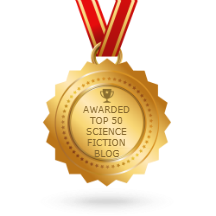 Billions of years in the future, when the Sun is big and red and close to death, who will be there to see it? H.G. Wells in The Time Machine explores this scenario briefly, imagining a bleak future inhabited by crablike creatures. Jack Vance is more optimistic - humans live on although past their prime.
Billions of years in the future, when the Sun is big and red and close to death, who will be there to see it? H.G. Wells in The Time Machine explores this scenario briefly, imagining a bleak future inhabited by crablike creatures. Jack Vance is more optimistic - humans live on although past their prime.I'm currently reading Hothouse by Brian Aldiss. Like Jack Vance Aldiss sets his novel in the distant future where the sun is close to dying. This is sci-fi and fantasy of a different kind though - the earth now belongs to the carnivorous and fast-moving descendents of the plants, with tree-running humanity one of just a handful of surviving animal species. It's a harsh reality - the members of the human tribe constantly face danger and death, while the vicious battles between different plants make the animal kingdom, or the human heyday, seem tame by comparison. Aldiss creates a world with detailed and internally consistent descriptions of the flora and fauna, and uses it to tell a story about the necessity, the inevitability and the fear of change. There is a great deal to uncover as the reader explores the setting, although much of this is lost on the protagonists who are only interested in their own survival.
Aldiss' setting has been criticised as implausible, but this is missing the point of the powerful and eerie central symbol of this novel - the tidally locked Earth and Moon and the webs of the Traversers connecting the two.








No comments:
Post a Comment